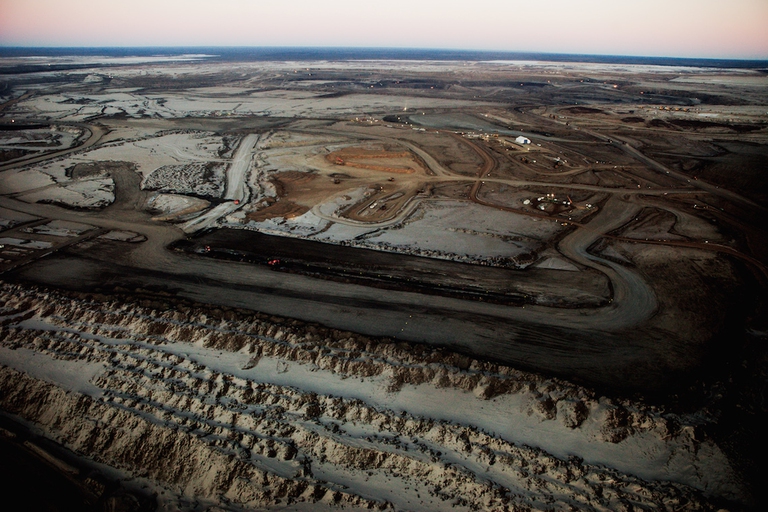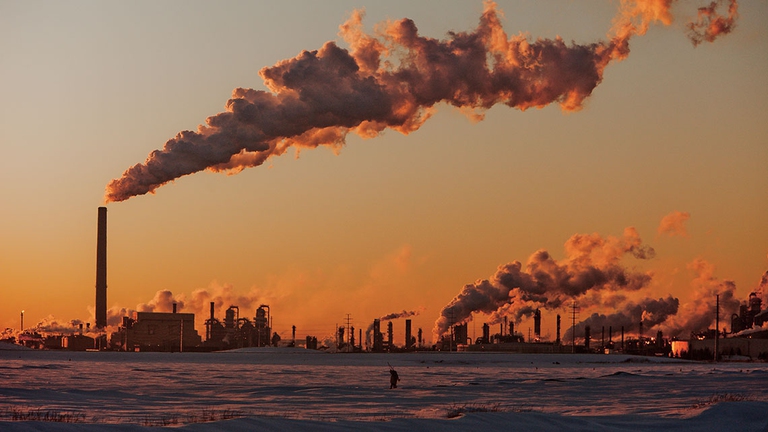
A group of experts in Tokyo suggested pouring radioactive water from Fukushima into the open sea. A marine biochemist explains the consequences of this absurd decision.
The Alberta tar sands hold much of Canada’s oil wealth: the region contains an estimated 1.7 trillion barrels of bitumen oil. The size of this reserve makes it the third largest oil deposit in the world after Venezuela and Saudi Arabia. Yet despite this, the cost of extraction now outweighs the profit made per barrel.
The Alberta tar sands hold much of Canada’s oil wealth: the region contains an estimated 1.7 trillion barrels of bitumen oil. The size of this reserve makes it the third largest oil deposit in the world after Venezuela and Saudi Arabia. Yet despite this, the cost of extraction now outweighs the profit made per barrel.
These inland deposits are becoming increasingly isolated. The Northern Gateway and Kinder Morgan pipelines, originally destined for Pacific seaports in the Canadian province of British Columbia, have effectively been halted by the Canadian government due to environmental concerns. This blow to the Albertan oil industry followed the Obama administration’s rejection of the Keystone XL pipeline, designed to take the tar sand oil to refineries in the United States.
In a not so distant past the region of the Alberta tar sands, which is the size of England, and its main city, Fort McMurray, experienced an economic boom due to the opportunities created by the oil industry. People flocked there, attracted by the money that could be made. This was also due to the fact that the type of oil in the tar sands, bitumen oil, involves open pit mining and requires more labour to be extracted compared to conventional oil extraction, which occurs through drilling rigs. It is a viscous and heavy form of crude oil, embedded in sand and clay that has to be scrapped away with the use of machinery and chemicals and then mixed with lighter forms of crude oil in order for it to flow. There used to be plenty of jobs in the extraction process, with high oil prices sustaining them for a long time.
However, with the price of oil having fallen 70 percent since June 2014 the cost of producing a barrel now outweighs the price that it sells for on the open market. This is compounded by high transportation costs, primarily via rail and road, and the rejection of the pipelines that were meant to bring down the price of transportation. This huge region has been left isolated and unprofitable and the future doesn’t look good for the Alberta tar sands, what with the economy shrinking and unemployment rising in Fort McMurray.
Whilst the future is daunting, it also presents a number of opportunities. This form of oil extraction, seen as one of the most environmentally catastrophic, may have to be scaled back, reducing risks such as pipeline leaks. This means that the Albertan economy has the opportunity to diversify itself and move towards more sustainable activities. The current issues may be a springboard to a much brighter and more environmentally friendly future.
Siamo anche su WhatsApp. Segui il canale ufficiale LifeGate per restare aggiornata, aggiornato sulle ultime notizie e sulle nostre attività.
![]()
Quest'opera è distribuita con Licenza Creative Commons Attribuzione - Non commerciale - Non opere derivate 4.0 Internazionale.
A group of experts in Tokyo suggested pouring radioactive water from Fukushima into the open sea. A marine biochemist explains the consequences of this absurd decision.
A federal court in Washington, D.C. has struck down the Dakota Access Pipeline, following years of campaigning by the Standing Rock Sioux tribe.
The Scottish island of Eigg is self-sufficient for its energy needs, relying almost entirely on renewable sources, especially thanks to a coordinated community effort.
President Magufuli in unmovable in going ahead with the Stiegler’s Gorge dam despite conservationists’ warnings of the damage it will cause the Selous Game Reserve’s ecosystem and wildlife.
A large dam along the Luangwa River in Zambia would have posed a serious risk to local people and wildlife, leading hundreds of thousands to oppose it. A call to which the government responded by halting plans to build it.
The first one megawatt solar power plant in the Chernobyl exclusion zone has become operational. This is the first step in a renewable energy development project promoted by the Ukrainian government in the area.
A tanker exploded at a gas and petrol station in Nigeria’s Nasarawa state on the 10th of September, killing 35 people and leaving some burned beyond recognition; 3 citizens had several spine and brain injuries, 2 of them are still on Intesive Care Units. Fela Habila , a local singer, is now stable and out of danger but
The largest tidal power plant in the world will be built in the Larantuka Straits. It will serve 100,000 people and help overcome some of the challenges of energy provision in Indonesia.
Robben Island’s solar energy micro-grid project will produce almost one million kilowatt hours of electricity annually, significantly reducing the cost and impact of buying diesel.









